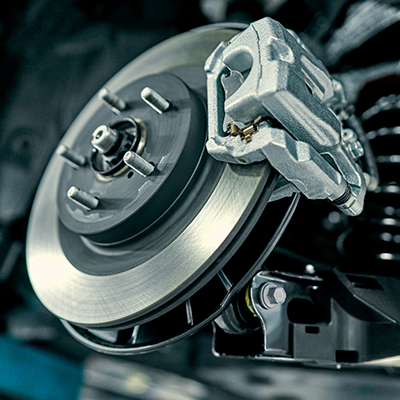Brake master cylinder replacement

The master cylinder is an important part of the braking system. It is responsible for properly pressurizing the brake fluid transported to the wheels by means of brake hoses. The master cylinder may be damaged as a result of corrosion, seal wear or leaking brake fluid. These may cause the seizure of the master cylinder, necessitating its replacement. Reconditioning of the master cylinder is not possible.
Tips
- Damage to the master cylinder significantly affects the operation of the brakes
- When replacing the master cylinder a good idea is to check the servomechanism providing power assistance to the brakes
- When having the master cylinder replaced remember to have the entire braking system inspected for potential damages or leaks
Scope of services
- removing the elements obstructing access to the master cylinder
- releasing the brake fluid from the system
- removing the master cylinder
- fitting a new master cylinder in
- refilling the system with fresh brake fluid
- venting the entire system
- checking the joints for potential leaks
Find a car workshop
Check out our workshops that offer the service brake master cylinder replacement in some of the biggest cities in your country
Additional info about the service
Where is the brake pump located?
The brake pump is connected to the brake pedal. Its role is to properly pressurize the brake fluid, which is transferred through brake hoses to brake callipers and cylinders in order to decelerate all car wheels. The pump is equipped with a reservoir containing brake fluid from which it is delivered to the pump and into which its excess is transferred. The pump consists of housing, acting as a cylinder, and a piston with seals.
Why does the brake pump wear?
The piston moving repeatedly inside the pump causes a gradual wear of the seals and, consequently, causes the fluid to leak between the pump's sections and outside the braking system. Leaking fluid reduces the efficiency of brakes and affects the elements located near the pump, as it causes damage to the varnished surfaces and penetrates the power brake servomechanism causing brittleness and cracking of the rubber membrane.
How is the brake pump replaced?
If your brake pump needs changing, you should have it done by a garage, as the procedure requires putting new fluid into the braking system and removing air from it. Replacing the pump boils down to unscrewing the hoses connected to it and the screws by means of which the pump is attached to the servomechanism. Fitting the pump back in place is done in the reverse order.
What to keep in mind
After removing air from the system a test drive should be performed to check the operation of the brakes. Some pump types require replacement of only piston seals, however, if a pump's housing is worn, the news seals will quickly disintegrate, causing another failure. Therefore, it is recommended that the entire pump is changed in order to ensure that it's 100 per cent effective, as you rely on it for your safety.